Yijie Wang
See the Forest and the Trees: A Synergistic Reasoning Framework for Knowledge-Based Visual Question Answering
Jul 23, 2025Abstract:Multimodal Large Language Models (MLLMs) have pushed the frontiers of Knowledge-Based Visual Question Answering (KBVQA), yet their reasoning is fundamentally bottlenecked by a reliance on uni-dimensional evidence. This "seeing only the trees, but not the forest" approach prevents robust, multi-faceted understanding. Inspired by the principle of seeing both the forest and trees, we propose Synergos-VQA, a novel synergistic reasoning framework. At its core, Synergos-VQA concurrently generates and fuses three complementary evidence streams at inference time: (1) Holistic Evidence to perceive the entire scene (the "forest"), (2) Structural Evidence from a prototype-driven module to identify key objects (the "trees"), and (3) Causal Evidence from a counterfactual probe to ensure the reasoning is robustly grounded. By synergistically fusing this multi-faceted evidence, our framework achieves a more comprehensive and reliable reasoning process. Extensive experiments show that Synergos-VQA decisively establishes a new state-of-the-art on three challenging benchmarks, including OK-VQA and A-OKVQA. Furthermore, our approach demonstrates strong plug-and-play capabilities, significantly boosting various open-source MLLMs and proving that superior methodological design can outperform sheer model scale.
RemixFusion: Residual-based Mixed Representation for Large-scale Online RGB-D Reconstruction
Jul 23, 2025Abstract:The introduction of the neural implicit representation has notably propelled the advancement of online dense reconstruction techniques. Compared to traditional explicit representations, such as TSDF, it improves the mapping completeness and memory efficiency. However, the lack of reconstruction details and the time-consuming learning of neural representations hinder the widespread application of neural-based methods to large-scale online reconstruction. We introduce RemixFusion, a novel residual-based mixed representation for scene reconstruction and camera pose estimation dedicated to high-quality and large-scale online RGB-D reconstruction. In particular, we propose a residual-based map representation comprised of an explicit coarse TSDF grid and an implicit neural module that produces residuals representing fine-grained details to be added to the coarse grid. Such mixed representation allows for detail-rich reconstruction with bounded time and memory budget, contrasting with the overly-smoothed results by the purely implicit representations, thus paving the way for high-quality camera tracking. Furthermore, we extend the residual-based representation to handle multi-frame joint pose optimization via bundle adjustment (BA). In contrast to the existing methods, which optimize poses directly, we opt to optimize pose changes. Combined with a novel technique for adaptive gradient amplification, our method attains better optimization convergence and global optimality. Furthermore, we adopt a local moving volume to factorize the mixed scene representation with a divide-and-conquer design to facilitate efficient online learning in our residual-based framework. Extensive experiments demonstrate that our method surpasses all state-of-the-art ones, including those based either on explicit or implicit representations, in terms of the accuracy of both mapping and tracking on large-scale scenes.
BoxFusion: Reconstruction-Free Open-Vocabulary 3D Object Detection via Real-Time Multi-View Box Fusion
Jun 18, 2025Abstract:Open-vocabulary 3D object detection has gained significant interest due to its critical applications in autonomous driving and embodied AI. Existing detection methods, whether offline or online, typically rely on dense point cloud reconstruction, which imposes substantial computational overhead and memory constraints, hindering real-time deployment in downstream tasks. To address this, we propose a novel reconstruction-free online framework tailored for memory-efficient and real-time 3D detection. Specifically, given streaming posed RGB-D video input, we leverage Cubify Anything as a pre-trained visual foundation model (VFM) for single-view 3D object detection by bounding boxes, coupled with CLIP to capture open-vocabulary semantics of detected objects. To fuse all detected bounding boxes across different views into a unified one, we employ an association module for correspondences of multi-views and an optimization module to fuse the 3D bounding boxes of the same instance predicted in multi-views. The association module utilizes 3D Non-Maximum Suppression (NMS) and a box correspondence matching module, while the optimization module uses an IoU-guided efficient random optimization technique based on particle filtering to enforce multi-view consistency of the 3D bounding boxes while minimizing computational complexity. Extensive experiments on ScanNetV2 and CA-1M datasets demonstrate that our method achieves state-of-the-art performance among online methods. Benefiting from this novel reconstruction-free paradigm for 3D object detection, our method exhibits great generalization abilities in various scenarios, enabling real-time perception even in environments exceeding 1000 square meters.
Evolutionary training-free guidance in diffusion model for 3D multi-objective molecular generation
May 16, 2025Abstract:Discovering novel 3D molecular structures that simultaneously satisfy multiple property targets remains a central challenge in materials and drug design. Although recent diffusion-based models can generate 3D conformations, they require expensive retraining for each new property or property-combination and lack flexibility in enforcing structural constraints. We introduce EGD (Evolutionary Guidance in Diffusion), a training-free framework that embeds evolutionary operators directly into the diffusion sampling process. By performing crossover on noise-perturbed samples and then denoising them with a pretrained Unconditional diffusion model, EGD seamlessly blends structural fragments and steers generation toward user-specified objectives without any additional model updates. On both single- and multi-target 3D conditional generation tasks-and on multi-objective optimization of quantum properties EGD outperforms state-of-the-art conditional diffusion methods in accuracy and runs up to five times faster per generation. In the single-objective optimization of protein ligands, EGD enables customized ligand generation. Moreover, EGD can embed arbitrary 3D fragments into the generated molecules while optimizing multiple conflicting properties in one unified process. This combination of efficiency, flexibility, and controllable structure makes EGD a powerful tool for rapid, guided exploration of chemical space.
Data Distribution Distilled Generative Model for Generalized Zero-Shot Recognition
Feb 18, 2024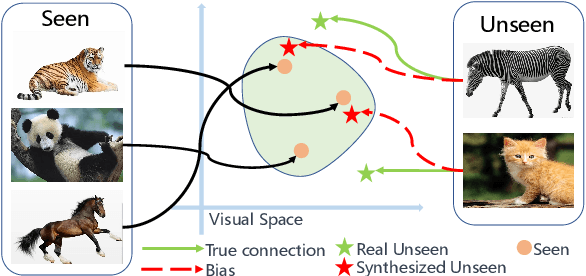
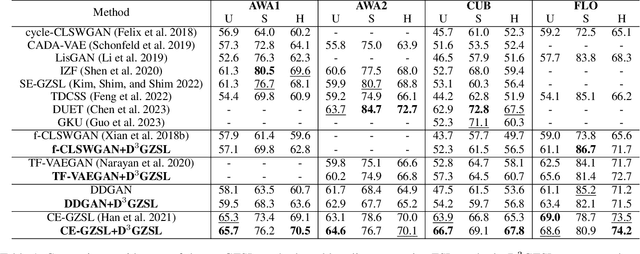
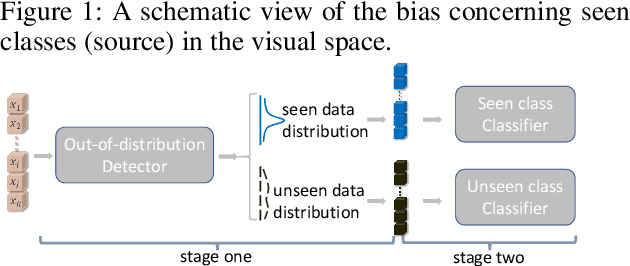

Abstract:In the realm of Zero-Shot Learning (ZSL), we address biases in Generalized Zero-Shot Learning (GZSL) models, which favor seen data. To counter this, we introduce an end-to-end generative GZSL framework called D$^3$GZSL. This framework respects seen and synthesized unseen data as in-distribution and out-of-distribution data, respectively, for a more balanced model. D$^3$GZSL comprises two core modules: in-distribution dual space distillation (ID$^2$SD) and out-of-distribution batch distillation (O$^2$DBD). ID$^2$SD aligns teacher-student outcomes in embedding and label spaces, enhancing learning coherence. O$^2$DBD introduces low-dimensional out-of-distribution representations per batch sample, capturing shared structures between seen and unseen categories. Our approach demonstrates its effectiveness across established GZSL benchmarks, seamlessly integrating into mainstream generative frameworks. Extensive experiments consistently showcase that D$^3$GZSL elevates the performance of existing generative GZSL methods, underscoring its potential to refine zero-shot learning practices.The code is available at: https://github.com/PJBQ/D3GZSL.git
YAYI-UIE: A Chat-Enhanced Instruction Tuning Framework for Universal Information Extraction
Jan 08, 2024Abstract:The difficulty of the information extraction task lies in dealing with the task-specific label schemas and heterogeneous data structures. Recent work has proposed methods based on large language models to uniformly model different information extraction tasks. However, these existing methods are deficient in their information extraction capabilities for Chinese languages other than English. In this paper, we propose an end-to-end chat-enhanced instruction tuning framework for universal information extraction (YAYI-UIE), which supports both Chinese and English. Specifically, we utilize dialogue data and information extraction data to enhance the information extraction performance jointly. Experimental results show that our proposed framework achieves state-of-the-art performance on Chinese datasets while also achieving comparable performance on English datasets under both supervised settings and zero-shot settings.
RoSAS: Deep Semi-Supervised Anomaly Detection with Contamination-Resilient Continuous Supervision
Jul 25, 2023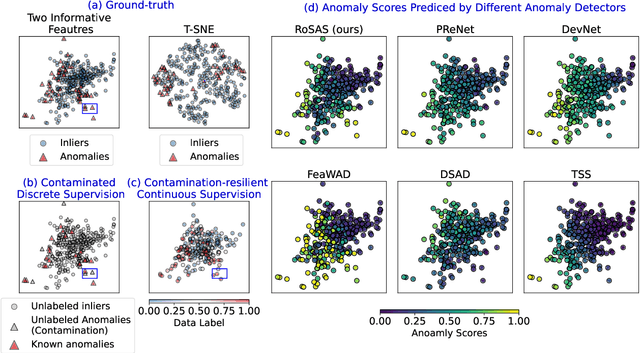
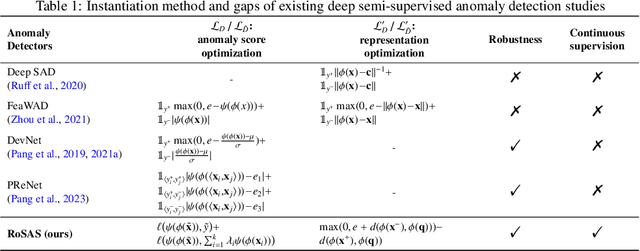
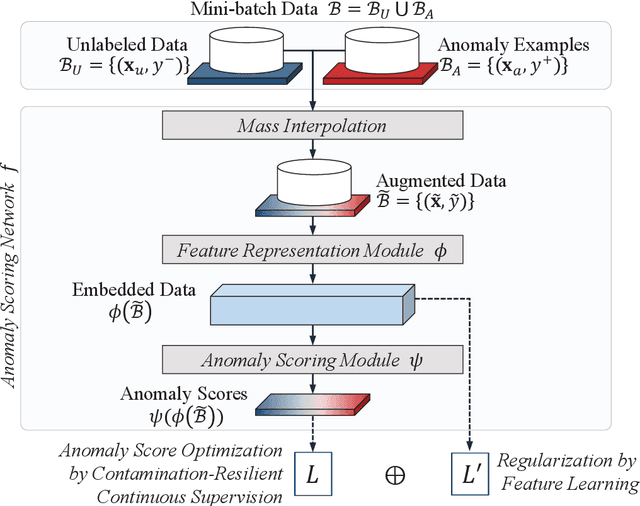
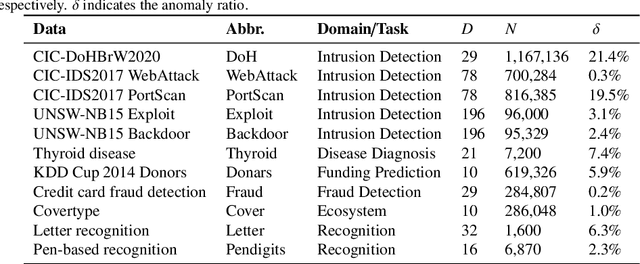
Abstract:Semi-supervised anomaly detection methods leverage a few anomaly examples to yield drastically improved performance compared to unsupervised models. However, they still suffer from two limitations: 1) unlabeled anomalies (i.e., anomaly contamination) may mislead the learning process when all the unlabeled data are employed as inliers for model training; 2) only discrete supervision information (such as binary or ordinal data labels) is exploited, which leads to suboptimal learning of anomaly scores that essentially take on a continuous distribution. Therefore, this paper proposes a novel semi-supervised anomaly detection method, which devises \textit{contamination-resilient continuous supervisory signals}. Specifically, we propose a mass interpolation method to diffuse the abnormality of labeled anomalies, thereby creating new data samples labeled with continuous abnormal degrees. Meanwhile, the contaminated area can be covered by new data samples generated via combinations of data with correct labels. A feature learning-based objective is added to serve as an optimization constraint to regularize the network and further enhance the robustness w.r.t. anomaly contamination. Extensive experiments on 11 real-world datasets show that our approach significantly outperforms state-of-the-art competitors by 20%-30% in AUC-PR and obtains more robust and superior performance in settings with different anomaly contamination levels and varying numbers of labeled anomalies. The source code is available at https://github.com/xuhongzuo/rosas/.
Fascinating Supervisory Signals and Where to Find Them: Deep Anomaly Detection with Scale Learning
May 25, 2023Abstract:Due to the unsupervised nature of anomaly detection, the key to fueling deep models is finding supervisory signals. Different from current reconstruction-guided generative models and transformation-based contrastive models, we devise novel data-driven supervision for tabular data by introducing a characteristic -- scale -- as data labels. By representing varied sub-vectors of data instances, we define scale as the relationship between the dimensionality of original sub-vectors and that of representations. Scales serve as labels attached to transformed representations, thus offering ample labeled data for neural network training. This paper further proposes a scale learning-based anomaly detection method. Supervised by the learning objective of scale distribution alignment, our approach learns the ranking of representations converted from varied subspaces of each data instance. Through this proxy task, our approach models inherent regularities and patterns within data, which well describes data "normality". Abnormal degrees of testing instances are obtained by measuring whether they fit these learned patterns. Extensive experiments show that our approach leads to significant improvement over state-of-the-art generative/contrastive anomaly detection methods.
Inhomogeneous graph trend filtering via a l2,0 cardinality penalty
Apr 11, 2023Abstract:We study estimation of piecewise smooth signals over a graph. We propose a $\ell_{2,0}$-norm penalized Graph Trend Filtering (GTF) model to estimate piecewise smooth graph signals that exhibits inhomogeneous levels of smoothness across the nodes. We prove that the proposed GTF model is simultaneously a k-means clustering on the signal over the nodes and a minimum graph cut on the edges of the graph, where the clustering and the cut share the same assignment matrix. We propose two methods to solve the proposed GTF model: a spectral decomposition method and a method based on simulated annealing. In the experiment on synthetic and real-world datasets, we show that the proposed GTF model has a better performances compared with existing approaches on the tasks of denoising, support recovery and semi-supervised classification. We also show that the proposed GTF model can be solved more efficiently than existing models for the dataset with a large edge set.
Calibrated One-class Classification for Unsupervised Time Series Anomaly Detection
Jul 25, 2022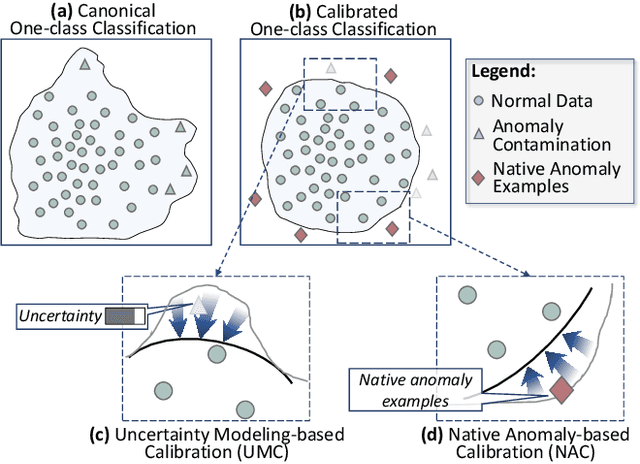
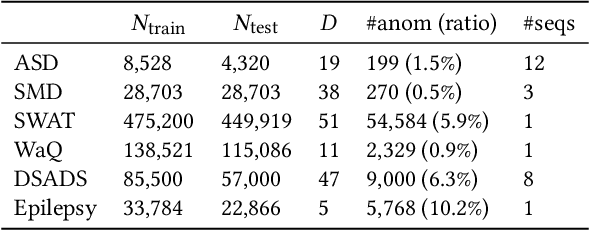
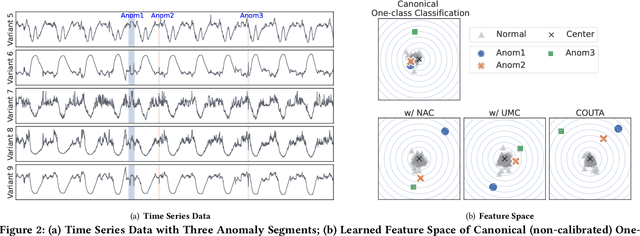
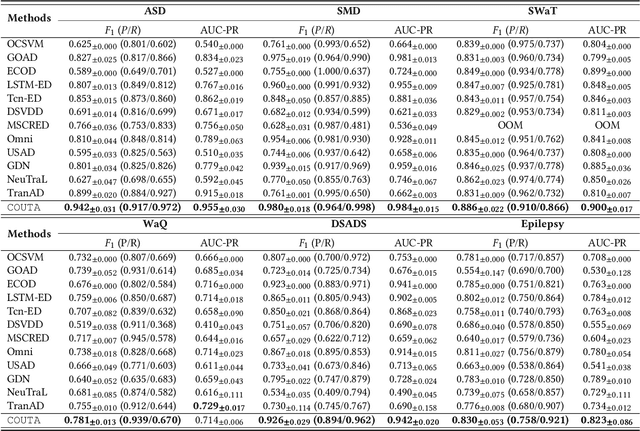
Abstract:Unsupervised time series anomaly detection is instrumental in monitoring and alarming potential faults of target systems in various domains. Current state-of-the-art time series anomaly detectors mainly focus on devising advanced neural network structures and new reconstruction/prediction learning objectives to learn data normality (normal patterns and behaviors) as accurately as possible. However, these one-class learning methods can be deceived by unknown anomalies in the training data (i.e., anomaly contamination). Further, their normality learning also lacks knowledge about the anomalies of interest. Consequently, they often learn a biased, inaccurate normality boundary. This paper proposes a novel one-class learning approach, named calibrated one-class classification, to tackle this problem. Our one-class classifier is calibrated in two ways: (1) by adaptively penalizing uncertain predictions, which helps eliminate the impact of anomaly contamination while accentuating the predictions that the one-class model is confident in, and (2) by discriminating the normal samples from native anomaly examples that are generated to simulate genuine time series abnormal behaviors on the basis of original data. These two calibrations result in contamination-tolerant, anomaly-informed one-class learning, yielding a significantly improved normality modeling. Extensive experiments on six real-world datasets show that our model substantially outperforms twelve state-of-the-art competitors and obtains 6% - 31% F1 score improvement. The source code is available at \url{https://github.com/xuhongzuo/couta}.
 Add to Chrome
Add to Chrome Add to Firefox
Add to Firefox Add to Edge
Add to Edge